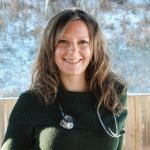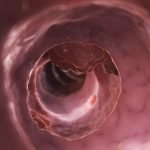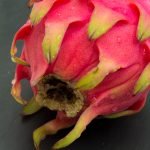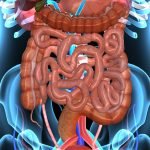Tolle Causam
Michelle Hagel, ND
Rabia Meghji, ND
As defined by Traditional Chinese Medicine, allergies represent an energetic blockage. Something has triggered the blockage to occur, whether it is an allergy to pollen, chemicals, or even food. In this article we will be discussing certain cases that highlight how the NAET technique has been used to treat an individual’s sensitivities or allergies to environmental substances, food, or chemicals.
An allergy is a condition of unusual sensitivity of a person to 1 or more substances that are usually harmless to the majority of other individuals. In the allergic person, the allergenic substance is viewed by the brain as a threat to the body’s well-being. Contact with an allergen creates blockages in the energy pathways (called meridians), disrupting the normal flow of energy through the body’s electrical circuits. This energy blockage causes interference in communication in the nervous system between the brain and body. This begins a chain of events that can develop into an allergic response. Undiagnosed allergies are often the cause of chronic illnesses that can become more serious or critical if untreated. By reprogramming the brain and removing blockages from the energy pathways, NAET allows the body to regain perfect balance (homeostasis) and function normally, ie, achieve optimal health.
NAET
NAET stands for Nambudripad’s Allergy Elimination Techniques, and was discovered in 1983 by Devi S. Nambudripad, DC, LAc, MD, PhD. It is an innovative treatment for allergies that is completely natural, painless, and non-invasive. NAET uses muscle response testing (MRT; aka applied kinesiology), which indicates kinetic imbalances in the body that are caused by allergens. The NAET treatment stimulates pressure points along the spine, from the neck to the sacrum, while the patient holds an allergen. A strong MRT indicates that the allergy has been removed. After the treatment has been performed, specific acupressure points are massaged – or acupuncture needles are used for 20 minutes – to further stabilize the treatment. For best results, the substance in question must be avoided for 25 hours following the treatment.
Several research studies have been conducted on the effectiveness of NAET. In a 2011 study called the “Biomedical Analysis of a Holistic Peanut Allergy Treatment,” participants with peanut allergy, ages 6-12, were able to successfully tolerate an oral peanut challenge after completing NAET treatments.1
In the same year, a pilot study on 60 autistic children was also published, which showed the efficacy of NAET on autistic symptoms.2 A global NAET study on autism, including 1296 children, is currently underway.3 Before entering the study, the initial screening of these children must be performed by a psychologist, neurologist, or psychiatrist, and participants must also have completed allergy testing.
Nambudripad’s Allergy Research Foundation4 has been collecting information from practitioners using NAET for various conditions. A few studies to highlight include the use of NAET to treat conditions such as abdominal bloating, flatulence, constipation, diarrhea, and eczema over a 10-year period.5
For patients treated for abdominal bloating, 720 out of 980 (74%) achieved resolution of symptoms after 15 visits. Only 11 patients (1%) either did not respond or follow up with the study. The remaining 25% of participants responded to treatment after 25+ visits.
In another study, which focused on flatulence, 436 out of 669 (65%) achieved resolution after 15 visits, while 1% either did not respond or follow up. The remaining 34% responded after 25+ visits.
In a study of patients suffering with constipation, the constipation resolved in 523 out of 775 (67%) after 15 visits, and only 0.004% of patients either did not respond or follow up. The remaining 33% responded after 25+ visits.
In the study that focused on patients with diarrhea, 1679 out of 2424 (69%) experienced resolution after 15 visits. Only 0.9% of patients either did not respond or follow up.
The last study to note was conducted on patients with eczema. Out of 76 patients, 38 (50%) achieved resolution after 15 treatments. Only 2 out of 76 (2.5%) either did not respond or follow up.
Patient Cases
We highlight here particular cases from our practice. Since our clinic uses a general approach, many of our patients who have responded well to NAET were also treated with nutrients, herbal combinations, homeopathics, and various other treatments. In the cases listed here, patients were only treated with NAET.
Case Study 1
A 44-year-old female patient presented to our clinic in January 2018 with severe intolerances to red meat and tomatoes since age 18. Her symptoms after exposure to these foods included severe stomach aches and vomiting. In January 2016, another doctor ran an IgG food antibody test on the patient, in which 19 foods showed elevated antibodies, particularly to dairy, brewer’s yeast, and wheat. The patient was only interested in doing NAET treatments, so no further supplementation was recommended during the course of treatment.
We started her on the basic 15 treatments, and it wasn’t until her tenth treatment that she started to notice a positive effect on her digestion. We did 3 additional treatments beyond the basic 15, and she has since been able to reintroduce all foods into her diet (including red meat and tomatoes) with no negative reactions.
Case Study 2
A 16-year-old female patient presented in May 2018 with environmental allergies that would typically begin in March and continue to August, or sometimes even September. She had been addressing her allergy symptoms by avoiding the outdoors and taking daily antihistamines during allergy season; however, she still suffered with itchy, watery eyes, difficulty breathing, and hives. Upon scratch testing, we determined that she was reacting to grass, weed mix, ragweed, pollen, and mold.
We began to treat her allergies in the first visit. She responded very well after the first treatment, and experienced no reactions for the remainder of the summer. She had 6 treatments in total and so far this year is still symptom-free.
Case Study 3
A 49-year-old female patient presented in June 2018 with chemical sensitivity. She was particularly sensitive to new products, most likely due to the chemicals that were used to treat them. Upon exposure, she would experience difficulty breathing, headaches, hives, itching, and fatigue. When this individual purchased new products, such as a mattress, she would have to let them off-gas for 3 weeks before being able to use them. Even then, she might still experience minor symptoms. New office buildings would cause symptoms. She had chemical sensitivity to the “new car” smell produced from VOCs (volatile organic compounds), which include chlorofluorocarbons, formaldehyde, benzene, methylene chloride, toluene, perfluorocarbons; these chemicals are often used to provide flame retardant or protective coatings, or used as a cleaner.
After only 1 NAET treatment, she was already responding very well, experiencing only minor headaches after exposures. After 3 treatments she was completely non-reactive. We are currently working through the basic 15 treatments to solidify her immune system and ensure this is a permanent resolution of chemical sensitivity.
Conclusion
NAET treatments can be used to retrain the body’s immune system to resolve sensitivities and allergies. Calming down the immune system helps lower inflammation and make other treatments more effective. NAET is an excellent option for people that are tired of strictly avoiding environmental triggers. It can also allow individuals to not be so restrictive in their diet or activities, especially if they react to many substances.
References:
- Vincent B, Bonzo D. Biomedical Analyses of a Holistic Peanut Allergy Treatment: NAET. Proceedings of the National Conference on Undergraduate Research (NCUR). Ithaca College, NY; March 31-April 2, 2011. Available at: https://www.naet.com/pdfs/peanutAllergy.pdf. Accessed May 22, 2019.
- Teitelbaum J, Nambudripad DS, Tyson Y, et al. Improving Communication Skills in Children With Allergy-related Autism Using Nambudripad’s Allergy Elimination Techniques: A Pilot Study. Integrative Med. 2011;10(5):36-43. Available at: https://pdfs.semanticscholar.org/2d73/dc9edc5291c0752bfd3f24fd1eb5823b997f.pdf. Accessed May 22, 2019.
- Global Autism Study. NAET Web site. https://www.naet.com/global-autism-study/. Accessed May 22, 2019.
- Nambudripad’s Allergy Research Foundation. 2016. Available at: http://www.narfoundation.com/research/. Accessed May 22, 2019.
- Results of 10-Year-Survey of the NAET Clinic Patients. Available at: https://www.naet.com/pdfs/NAET_Booklet_new.pdf. Accessed May 22, 2019.
Photo by Brittany Colette on Unsplash
 Michelle Hagel, ND, has been practicing naturopathic medicine for 4 years at Docere Wellness clinic, in North West Calgary, Alberta. After completing her BSc in neuroscience, her desire to pursue the mind-body connection and whole-body health led her into naturopathic medicine. Dr Michelle’s focus is on digestive health and allergies. After seeing the rising incidence of food allergies and intolerances, she began her training in Nambudripad Allergy Elimination Treatment. Her desire is to provide optimal health to all of her patients through natural, non-invasive protocols and education.
Michelle Hagel, ND, has been practicing naturopathic medicine for 4 years at Docere Wellness clinic, in North West Calgary, Alberta. After completing her BSc in neuroscience, her desire to pursue the mind-body connection and whole-body health led her into naturopathic medicine. Dr Michelle’s focus is on digestive health and allergies. After seeing the rising incidence of food allergies and intolerances, she began her training in Nambudripad Allergy Elimination Treatment. Her desire is to provide optimal health to all of her patients through natural, non-invasive protocols and education.
***
 Rabia Meghji, ND, graduated in 2005 from CCNM, where she was also the recipient of the leadership award. She has been in private practice for the past 14 years, with a special interest in pediatrics, allergies, women’s health, and autoimmune conditions. Dr Meghji is the medical director/owner of Docere Wellness Centre, in Calgary, Alberta. She has also been past President of the Alberta Association of Naturopathic Doctors and Vice President of the College of Naturopathic Doctors.
Rabia Meghji, ND, graduated in 2005 from CCNM, where she was also the recipient of the leadership award. She has been in private practice for the past 14 years, with a special interest in pediatrics, allergies, women’s health, and autoimmune conditions. Dr Meghji is the medical director/owner of Docere Wellness Centre, in Calgary, Alberta. She has also been past President of the Alberta Association of Naturopathic Doctors and Vice President of the College of Naturopathic Doctors.





